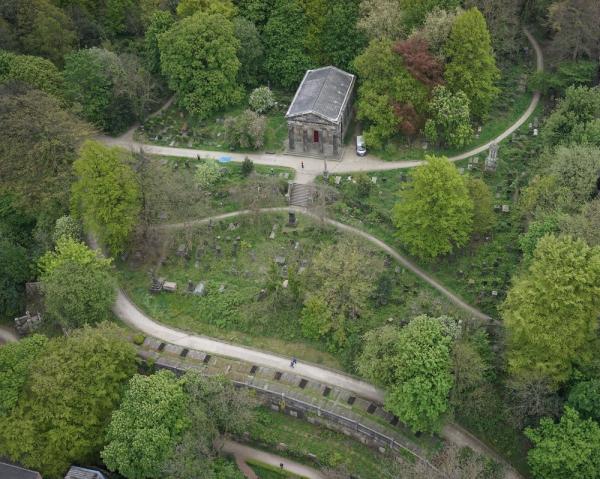Sheffield General Cemetery
Sheffield General Cemetery is a valuable green space in the heart of the city. It is a site of unique historical importance, a haven for wildlife and a tranquil place for all to enjoy. It opened in 1836 with its last burial in 1978. The site is now preserved as a mixture of meadow, woodland, and monuments for the general public to enjoy.
The orienteering courses are funded by Heritage Lottery Funding and maps are available free of charge. There are 3 orienteering courses to choose from: very easy (0.9km), easy (1.0km) and medium (1.5km). Answer & instruction sheet available.
(Maps & answer sheet updated 12/8/23).
| General Cemetery - All Controls | FREE | |
| General Cemetery - Easy | FREE | |
| General Cemetery - Medium | FREE | |
| General Cemetery - Very Easy | FREE | |
| Instructions & Answers | FREE |
| General Cemetery - All Controls | FREE | |
| General Cemetery - Easy | FREE | |
| General Cemetery - Medium | FREE | |
| General Cemetery - Very Easy | FREE | |
| Instructions & Answers | FREE |
Maps can be downloaded for free.
Sheffield General Cemetery opened in 1836. It became established as the principal burial ground in Victorian Sheffield containing the graves of 87,000 people. One of the earliest commercial cemeteries in Britain, it contains the largest collection of listed buildings and monuments in Sheffield, including Grade II listed catacombs, an Anglican Chapel, Gatehouse, Non-conformist Chapel and the Egyptian Gateway. There is the largest single grave plot in the country, holding the bodies of 96 paupers. It is also home to many important figures in Sheffield's history such as Mark Firth, the steel manufacturer, and Samuel Holberry, the Chartist.
The site today is a Grade II* listed park which is the highest listed in Sheffield and one of only four in South Yorkshire. It is a Conservation Area, Local Nature Reserve, and Area of Natural History Interest. The Sheffield General Cemetery Trust carries out educational tours and workshops; conservation work to maintain and enhance the monuments, the landscape, and the paths; and historical research on the Cemetery and its occupants. The aim is to encourage everyone to enjoy this historical site by walking its paths, learning its history or simply enjoying a quiet, peaceful place.

